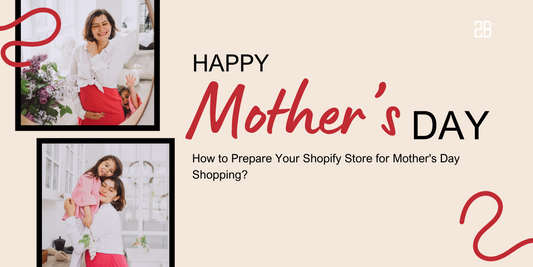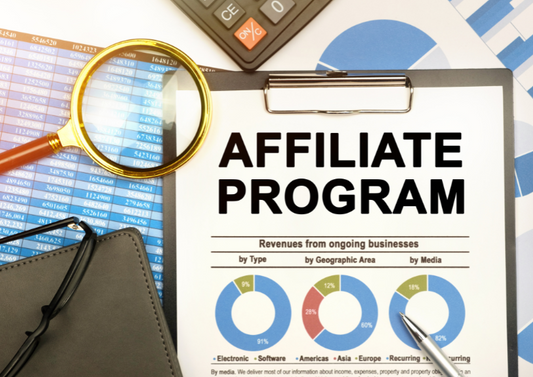What do you think is the fastest way to boost your name on social media? It’s not traditional advertisement or email marketing - it’s influencers and their powerful effect on followers that help you build up brand awareness and reach new audiences in less than no time.
The article today will be all about influencer marketing. We will show you what it is, how many types of influencers are, where to find them, and how to adopt influencer marketing most effectively.
1. Definition of Influencer Marketing
In general, influencers are people who have already established a reputation in a particular area and will act as online ambassadors for your business brand. Influencer marketing is a strategy in which you give those people a payout in exchange for the endorsement for your products - with the payout might be cash, product trials, discounts, or so on…

Influencer marketing tends to be favored by most marketers because it is more trustworthy and closer to customers - it’s somehow like an acquaintance recommending a product for you. You will adopt that recommendation, simply because you trust your acquaintances, you trust your friends and families. Back to the case of influencer marketing: Audiences also follow influencers because they trust those people, which will then urge them to believe in their endorsement and finally decide to buy the products.
One of the finest examples of influencer marketing is Nominal - a well-known jewelry brand that was founded by Akram Abdallah and Lena Sarsour. At first, those founders couldn’t afford any influencers. Therefore, the two decided to send free jewelry as a gift to some random famous people. If any of them thought the products were beautiful and shareable, they would post about Nominal on social media and the brand would repost the content on their feed. The result? The brand has been widely advertised without spending any fee (except for production cost and the shipping, of course).

2. Five Types of Influencers
Influencers are divided based on the number of their followers. According to Upfluence, the smaller influencers are, the higher the engagement rate is.

Source: HypeAuditor
#1. Nano (1-10K)
Nano-influencers can be anywhere - they’re around us and followed by 1,000 to 10,000 accounts on Instagram. They don’t consider “influencers” as a full-time job, so their feeds won’t look too glamorous and the photos won’t be edited too professionally. However, growing e-commerce businessmen still prefer to work with them because of the reasonable price and their genuine, dedicated followers.
Just look at the chart above and you can see that the engagement rate brought about by nano-influencers (5% on average) is much bigger when compared to that of bigger accounts (2.2% on average).
#2. Micro (10-100K)
Micro-influencers are social accounts with 10,000 to 100,000 followers and they account for 47% on Instagram (according to HyperAuditor). Similar to nano type, micro-influencers have a loyal follower base with more targeted audiences and greater effect, so they’re pretty favored by merchants who are trying to sell online.
#3. Mid (100-500K)
Representing 26% of the total accounts on Instagram and being the second largest group of all, mid-tier influencers attract a community of 100,000 to 500,000 followers on the platform. Collaboration with those people gives you a well-segmented audience and maximum exposure, not to mention the fact that the price is affordable and it’s easier to contact them than maco- or mega- influencers.
#4. Macro (500K-1M)
Those who achieve 500,000 to 1,000,000 followers are called macro-influencers. They often develop a website to grow the following, with the fee ranging from $1,000 to $10,000 (depending on which platform they’re using).
Macro-influencers are ideal collaborators because (1) they’re immensely experienced with a streamlined process, (2) their reach is massive, and (3) their audiences are relevant to your brand.
#5. Mega (1M+)
Mega-influencers are quite familiar with us - they are social celebrities on Instagram or Youtube such as Louise Thompson, and they develop a fanbase with different likes and interests.
If finance isn’t a matter and you’re willing to pay $10,000 or even six figures, mega-influencers definitely should be your first choice because their reputation is useful a lot in enhancing your products’ credibility.
3. Influencer Marketing Platforms
To the best of our knowledge, here are the best four places to find out your suitable influencers:
- Grin: Grin offers nearly 40 million influencers in various types of social media platforms, such as YouTube, TikTok, Instagram, Snapchat, or LinkedIn. In addition to its own functions (reporting, analytics, content management, and payments), Grin also integrates Shopify so that the shipping logistics of influencer sales can be handled much easier.

- Upfluence: If you’re looking for influencers used by brands like Universal or Amazon, this platform should be on top of the priority list. Upfluence offers 20 advanced search filters so that you can set the prices and find influencers who match your criteria, not to mention the fact that it also evaluates and shows you the results of their performances as well.

- Creator.co: New as it is, Creator.co still includes 500+ million influencers for you to choose from. Creator. co provides you with the self-service option to search for influencers manually and a “hands-free” option to define the ideal campaign and influencer, which all leads to the best fit for you and your online brand.

4. Steps to Launch An Influencer Marketing Campaign
Step 1: Search for Influencers
First of all, you need to define your budget and business goal to decide which kind of influencers are most suitable: nano-, micro-, macro-, or mega-influencers. After that, find them by typing a hashtag on Instagram and searching through the top section, or utilizing one of the three platforms we recommend above.
No matter what size influencers are, you’d better ask them to provide an analytics screenshot as a way to look at the demographics of their audience. You also need to check their past work to make sure that they can create the content you want, like checking the uploaded videos on their Youtube channels, for example.
Step 2: Reach out to Influencers
Bear in mind that influencers are not really busy as shown by the number of followers - they might be followed by 50,000 accounts, but in fact, just receive 5 DM a day. Therefore, be confident when you reach out to them - don’t think that your message will be ignored or your brand is too small that they don’t want to give it a try.
When you send an email, try to be as personal and friendly as possible. The email might include the following content:
Introduce your brand
Make a connection: Describe how you know them and make a compliment on their previous works
Tell them that you want to collaborate with them and softly explain your expectations. Don’t make it too detailed - details are for later when they accept your invitation.
Let them know how to read about your brand and how to contact you.
Step 3: Discuss the Content
At this stage, you guys should be clear about:
- Type of content: The content might be a meme, a picture of the product, or a video about brand ethos. I recommend you to talk about what you want, not the specific script, and force them to follow it. Just give them creative freedom because after all, you choose them as you like their previous works.
- Place to post content: Based on your intention and targeted audiences, the content can be on a story post, a feed post, or in their blog...
- Call to action: Call to action are sentences like “Don’t forget to check out the website xxx to see their new update”. Ask them to leave a link to shop with you so that there will be a higher return on investment.
- Timeline: Remember to set the date for the first draft and final draft.
- Payment: If you pay in cash, ask them about their rate. If not, you can give them special discounts, free products, or special career opportunities (for example, contributing to the latest design of your product).
Step 4: Track the Results
There are two ways to know whether influencer marketing brings the return on investment or not:
- UTM code: UTM code is a simple code added to a URL to track a campaign’s performance. You can ask influencers to include the link in their Youtube description box and see how many people click on the link and buy products.
- Special discount code: You give influencers a special discount code so that their audiences can add it at the checkout. The number of people using the code is equivalent to customers that are brought in by influencers.
After getting the result, compare the results with your initial goal. If achieved, you can work with those influencers again; but if the campaign isn’t successful as expected, try working with different content and different influencers, or you can even use another marketing strategy - like Facebook ads or email marketing.
After all, it’s you who understands your business most. Be patient with it and the tree will bear fruit soon, we promise!




